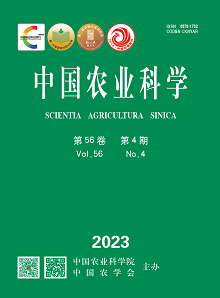【Objective】 Seed soaking treatment is commonly used in potato production to promote tuber germination and bud growth. However, the improper use of seed soaking agents can trigger an imbalance of endogenous plant hormone levels, leading to the emergence of potato high-legged seedlings. In this study, the immersion effects on the growth and endogenous hormone content of potato minitubers were studied, so as to provide a theoretical basis for the safe use of chitooligosaccharide as a seed dressing agent for potato minituber. 【Method】The minitubers of Favorita were soaked with chitooligosaccharide solution at different concentrations of 10, 50, and 200 mg∙L-1 (w/v), respectively, and the most effective concentration for promoting bud growth was screened. Seeds treated with 50 mg∙L-1 (w/v) chitooligosaccharide for 15 min was the treatment group (COS50), and the negative and positive control groups were treated with distilled water (Con) and 15 mg∙L-1 gibberellin (GA3), respectively. The germination rate, germination energy, bud length and bud diameter of tubers after seed soaking treatment were determined. The content of endogenous hormones in bud tissue was analyzed by ELISA before treatment (BT), before germination stage (BGS), germination stage (GS), and vigorous growth period (VG), respectively, and the morphology of terminal bud cells of GS was observed by paraffin section staining. Pearson correlation analysis was used to determine the intrinsic differences between shoot growth and endogenous hormone content. 【Result】Seed soaking with 50 mg∙L-1 (w/v) chitooligosaccharide effectively promoted the germination and growth of tuber buds of the potato minitubers. The bud length and bud diameter of the treated samples were significantly higher than that of Con group (74.7%) and GA3 group (37.2%). On the 5th day after soaking, the tuber germination rate reached 100%, which was 40.0% and 17.0% higher than the negative and the positive control, respectively. The germination energy of the minitubers was significantly enhanced. On the 5th day after treatment, the germination energy of minituber increased by 80.0% and 28.6% compared with Con and GA3 groups, respectively. Different seed soaking treatments also showed significant differences in the endogenous hormone contents in the terminal bud meristem of minitubers. Compared with the negative control, COS50 treatment elevated the levels of auxin, cytokinin, and gibberellin in the tubers during VG period, and the contents of these hormone increased by 11.4%, 2.7%, and 2.5%, respectively, while the content of abscisic acid decreased by 3.2% (P<0.05). The positive control treatment promoted the highest levels of endogenous gibberellin, cytokinin and auxin, and COS50 treatment group had significantly lower levels of auxin, cytokinin and gibberellin than the positive control group by 5.1%, 8.4%, and 2.0%, respectively (P<0.05). No significant reduction was observed in the level of abscisic acid. However, the contents of endogenous polyamines in the apical bud meristems of the minitubers treated with COS50 was 7.0% and 2.8% higher than those in the Con and GA3 treatment groups, respectively. The results of paraffin section staining revealed that the morphological differences between the minitubers terminal bud cells was attributed to the different seed soaking treatments. The cells of the terminal bud meristem expanded resulting in elongated and flat shape in GA3 treatment, while the cells of COS50 treatment group showed a uniform shape, similar to the negative control. Furthermore, the sprouts growth, sprouts diameter, germination rate and energy of minitubers were positively correlated with the increase of cytokinin, gibberellin and polyamines contents induced by COS50 treatment (P<0.05), while abscisic acid and ployamines content were significantly negatively correlated (r=-0.785, P<0.01). 【Conclusion】Seed soaking with chitooligosaccharide increased the contents of auxin, cytokinin, gibberellin, and polyamines in sprouts of minitubers. The treatment also increased the germination rate, sprouts length and sprouts diameter of potato minitubers. Uniform enlargement of meristematic cells in the sprouts of minitubers observation showed that COS50 treatment did not affect the longitudinal elongation of apical bud meristematic cells during the expansion process, causing the bud to grow wildly. However, gibberellin content decreased significantly in seed soaked with 50 mg∙L-1 (w/v) chitooligosaccharide compared with the treatment with exogenous gibberellin 3.









